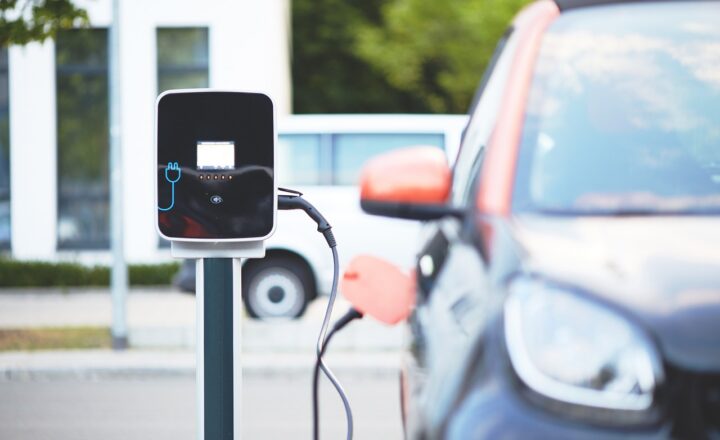How Electric Boats Are Shaping the Future of Marine Transport
November 12, 2024

The maritime industry is undergoing a transformation as the world shifts towards more sustainable and eco-friendly solutions. Among the innovations steering this change, electric boats have emerged as a central player, promising to revolutionize how we think about marine transport. With rising concerns about climate change and a growing emphasis on reducing carbon footprints, the adoption of electric-powered vessels is not only a trend but a necessity. In this article, we will explore how electric boats are shaping the future of marine transport.
1. The Rise of Electric Boats in Marine Transport
The concept of electric boats is not new. However, recent advancements in battery technology, electric propulsion systems, and renewable energy integration have made electric vessels more viable than ever. The rise in popularity of electric boats can be attributed to several key factors:
- Environmental Concerns: With the alarming increase in carbon emissions and their impact on climate change, the marine industry is under pressure to find alternatives to traditional fossil fuels. Electric boats produce zero emissions, significantly reducing the environmental impact associated with marine transport.
- Cost Efficiency: Operating electric boats can lead to substantial cost savings. Electric engines are typically more efficient than their gasoline counterparts, leading to lower fuel and maintenance costs over the lifespan of the vessel.
- Technological Advancements: Innovations in battery technology have enhanced the performance and range of electric boats, making them more appealing for various applications, from recreational boating to commercial shipping.
These factors have converged to create a fertile ground for the growth of electric boats in marine transport across the globe.
2. The Technological Landscape of Electric Boats
Electric boats utilize electric propulsion systems powered by batteries, which can be charged using renewable energy sources such as solar, wind, or hydropower. This integration of clean energy is pivotal in promoting environmental sustainability within marine transport.
Key components of electric boats include:
- Electric Motors: These high-efficiency motors replace traditional internal combustion engines, providing a quieter and smoother ride while utilizing less energy.
- Batteries: Modern lithium-ion batteries are lightweight and have high energy densities, enabling longer travel ranges. Innovations in battery technology continue to enhance the capabilities of electric vessels.
- Charging Infrastructure: The growth of electric boat adoption is also reliant on expanding charging infrastructure. Marinas and ports are increasingly installing fast-charging stations, ensuring that electric boats can recharge conveniently during stops.
As these technologies continue to evolve, the efficiency and practicality of electric boats in marine transport will be greatly improved.
3. Electric Boats in Commercial and Recreational Use
The potential applications of electric boats stretch across various sectors, providing significant benefits for both commercial and recreational marine transport.
Commercial Shipping:
Many shipping companies are exploring electric vessels to reduce operational costs and meet stringent environmental regulations. Examples include:
- Ferries: Electric ferries are making a substantial impact in urban transport. Cities such as Amsterdam and Copenhagen have adopted electric ferries, providing an emission-free means of transport for commuters while reducing noise pollution in urban waters.
- Cargo Ships: Several companies are testing electric cargo ships for short-distance routes. These vessels can lower shipping costs while adhering to stricter environmental regulations imposed by many coastal states.
Recreational Boating:
On the recreational side, electric boats are becoming increasingly popular among boating enthusiasts. The benefits include:
- Quiet Operation: Electric boats offer a quieter experience on the water, allowing for a more serene environment, especially for fishing or nature trips.
- Low Maintenance: With fewer moving parts, electric boats generally require less maintenance than traditional boats, making them appealing for recreational use.
The shift toward electric vessels can make waterways more accessible and enjoyable for all while keeping the environment in mind.
4. Challenges and Limitations of Electric Boats
Despite the positive trends associated with electric boats, some challenges hinder their widespread adoption:
- Range Anxiety: Similar to electric cars, range anxiety remains a concern for potential electric boat users. While battery technology is improving, the limited distance an electric boat can cover compared to traditional vessels can deter some users.
- High Initial Costs: Although electric boats can save money over time through fuel and maintenance costs, the upfront cost of purchasing an electric vessel can be higher than conventional options, which may limit their adoption in the short term.
- Charging Infrastructure Availability: The availability of charging stations at marinas and ports is crucial. Without sufficient infrastructure, electric boat usage can be hampered, especially on longer journeys.
Addressing these challenges will be essential for accelerating the growth of electric boats in marine transport.
5. The Future of Electric Boats in Marine Transport
As technology continues to evolve and society places an increased importance on sustainability, the future of electric boats in marine transport looks bright. To ensure that growth continues, various stakeholders will need to collaborate:
- Government Policies: Supportive government policies and incentives can encourage manufacturers and consumers to invest in electric marine technology, including grants for research and development, subsidies for buyers, and the creation of charging infrastructure.
- Increased R&D Investment: Continued investment in research and development will lead to innovations in battery technology, electric propulsion systems, and sustainable practices, thus furthering the capabilities of electric vessels.
- Consumer Awareness and Education: Increasing consumer awareness about the benefits of electric boats will play a key role in driving demand. Initiatives aimed at educating boaters on costs, benefits, and environmental impacts can facilitate this shift.
The marriage of technology and sustainability through electric boats presents an exciting opportunity in marine transport. As we move toward a greener future, electric boats are set to become a crucial player on the water.
Conclusion
Electric boats are more than just a passing trend—they represent a significant shift toward sustainable and efficient marine transport. With advancements in technology and growing environmental awareness, the future of electric boats shines brightly. By overcoming current challenges and embracing innovative approaches, we can transform our waterways into cleaner, quieter, and more sustainable spaces for everyone to enjoy. As electric boats become increasingly prevalent, they will undoubtedly shape the future landscape of marine transport in ways we are only beginning to understand.







